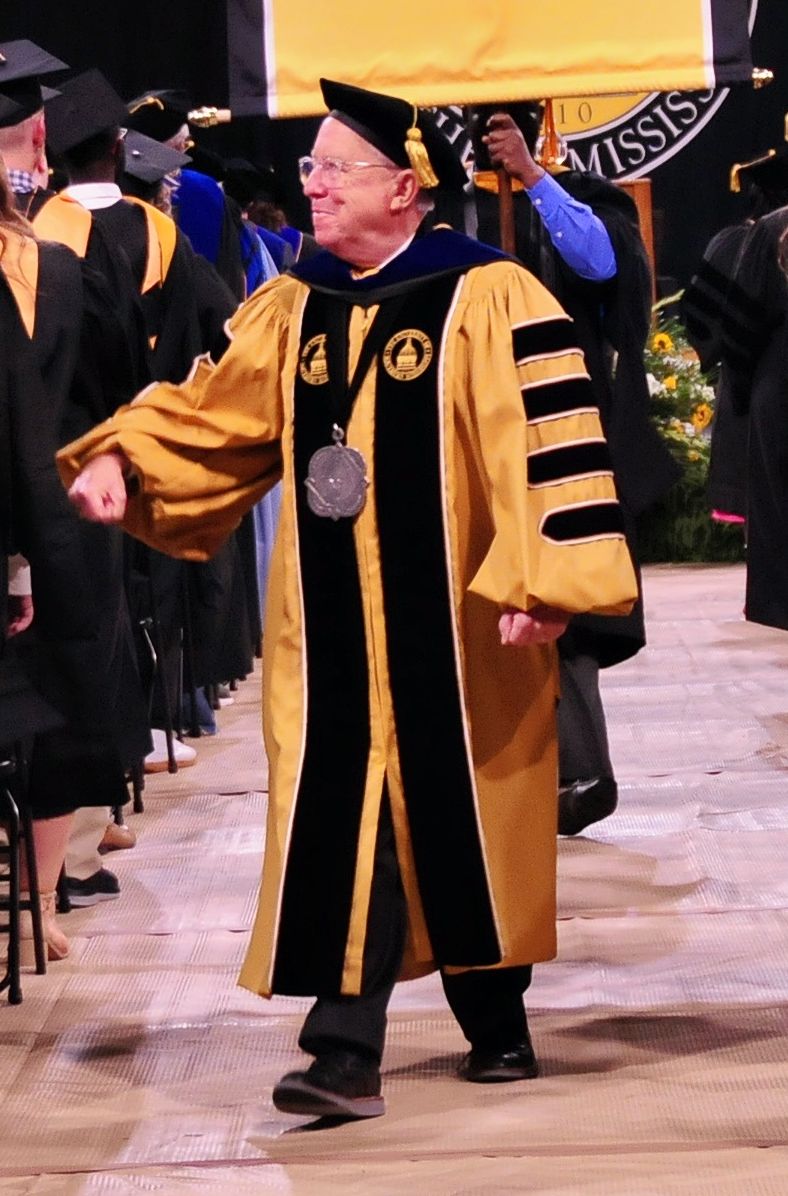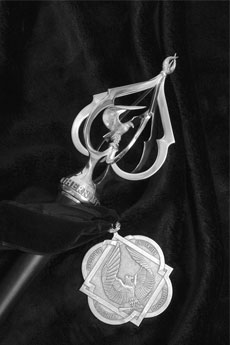Office of the President
About the Inauguration
Page Content
Inaugural Ceremony
The Inaugural Ceremony, or investiture, is an academic tradition originating in English universities. The word “investiture” comes from the Latin phrase for “dress in robe,” and this term used in academia refers to the donning of the university's regalia.
The Inaugural Ceremony is an important institutional event that formally marks a new era of leadership. The event includes many academic traditions and protocols, including an academic procession with delegates from other colleges and universities, as well as faculty of the host institution. The ceremony typically features musical selections, greetings from university and community groups, introduction of the president, an address, the official transfer of institutional leadership, and the singing of the Alma Mater.
Regalia

Joe Paul in regalia during commencement
Academic apparel originated in the Middle Ages when scholars were also clerics. Efforts to keep warm in drafty monasteries resulted in capes with hoods attached worn with robes — though robes were typical of medieval men and women and hardly confined to monks. Even so, gowns and robes acquired distinctions reflective of various professions, trades and religious orders. The tradition spread to America, but not until 1895 did this country adopt a specific code for American academic apparel. With only slight modifications by committees of the American Council on Education in 1959 and in 1986, the 1895 regulations still govern academic apparel.
The gown is usually made of black material of varying fullness. The distinguishing characteristics are the sleeves’ length and shape. Bachelor’s gowns have long, pointed sleeves; master’s gowns have full-length, square sleeves, crescent-shaped at the bottom; and doctoral gowns have full, round, open sleeves with three velvet bars. The doctoral gowns are closed and faced down the front with panels of velvet.
The cap, the mortarboard worn for all ranks and degrees at The University of Southern Mississippi, bears a tassel that is gold, the University color, for the bachelor’s and doctoral degrees; the color of the tassel for the master’s degree reflects the general degree area of study. Ceremonial switching of the tassel from the right to the left after the awarding of the degree is permitted.
The hood indicates the source of the graduate degree. Candidates for bachelor’s degrees do not wear hoods at The University of Southern Mississippi. Master’s hoods are approximately three-and-one-half feet with three-inch panels; doctoral hoods are approximately four feet with five-inch panels with reversed double chevrons. The silk lining bears the institution’s colors of black and gold, and the velvet panel colors indicate the general field of study (e.g., M.A., white; M.B.A., camel; M.Ed., light blue; M.F.A., brown; M.L.I.S., lemon yellow; M.M., pink; M.M.Ed., pink; M.P.A., camel; M.P.H., salmon pink; M.S., gold; M.S.N., apricot; M.S.W., citron; Ed.S., light blue; Au.D., rhodes blue; D.M.A., pink; D.N.P., apricot; Ed.D., light blue; Ph.D., dark blue).
University Mace

University Mace and Presidential Medallion
The University mace, carried at the head of the procession by the grand marshal, symbolizes the authority of the Office of the President of the University. Originating in the Middle Ages as a hand weapon used by guards of kings and other high officials, the mace has evolved into a ceremonial symbol in academic processions. The mace was designed by Ronlin Foreman, a former University of Southern Mississippi student, and fashioned by Wakely and Wheeler Ltd., London, England, silversmiths since 1791. An eagle, encased in an open orb of sterling silver, points with uplifted wings to a crown of laurel, signifying honor and distinction. With “Southern Mississippi” embossed at its base, the orb adorns a 36-inch ebony staff, banded and tipped with silver.
Presidential Medallion
The presidential medallion, designed by Southern Miss alumnus Ronlin Foreman and worn by Joseph S. Paul, symbolizes the Office of the President of The University of Southern Mississippi. Suspended on a ribbon of black velvet, the sterling silver medallion displays the eagle, clutching quill and scroll, with wings uplifted toward a crown of laurel, signifying honor and distinction. Engraved on the reverse side of the medallion are the names of past Southern Miss presidents and the dates of their administrations.